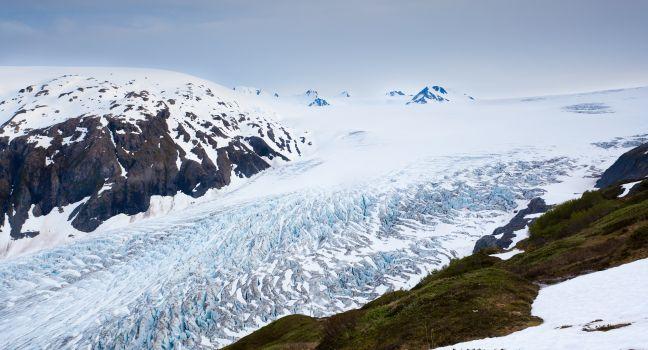The opportunity to view Kodiak brown bears alone is worth the trip here. Approximately 3,000 Kodiak brown bears, the biggest brown bears anywhere—sometimes topping out at more than 1,500 pounds—share the refuge with a few other land mammals: red foxes, river otters, short-tailed weasels, and tundra voles. Additionally, a number of mammals have been introduced to the archipelago: Sitka black-tailed deer, snowshoe hare, beavers, muskrat, Roosevelt elk, and mountain goats. The 1.9-million-acre refuge lies mostly on Kodiak Island and neighboring Afognak and Uganik Islands, in the Gulf of Alaska. All are part of the Kodiak Archipelago, separated from Alaska's mainland by stormy Shelikof Strait.
Within the refuge are rugged mountains, tundra meadows and lowlands, and thickly forested hills, plus lakes, marshes, and hundreds of miles of pristine coastland. No place in the refuge is more than 15 miles from the ocean. The weather here is generally wet and cool, and storms born in the North Pacific often bring heavy rains. Dozens of species of birds flock to the refuge each spring and summer, including Aleutian terns, horned puffins, black oystercatchers, ravens, ptarmigan, and chickadees. At least 600 pairs of bald eagles live on the islands, building the world's largest bird nests on shoreline cliffs and in tall trees. Six species of Pacific salmon—chums, kings, pinks, silvers, sockeyes, and steelhead—return to Kodiak's waters from May to October. Other resident species include rainbow trout, Dolly Varden (an anadromous trout waiting for promotion to salmon), and arctic char. The abundance of fish and bears makes Kodiak National Wildlife Refuge popular with anglers, hunters, and wildlife watchers.




